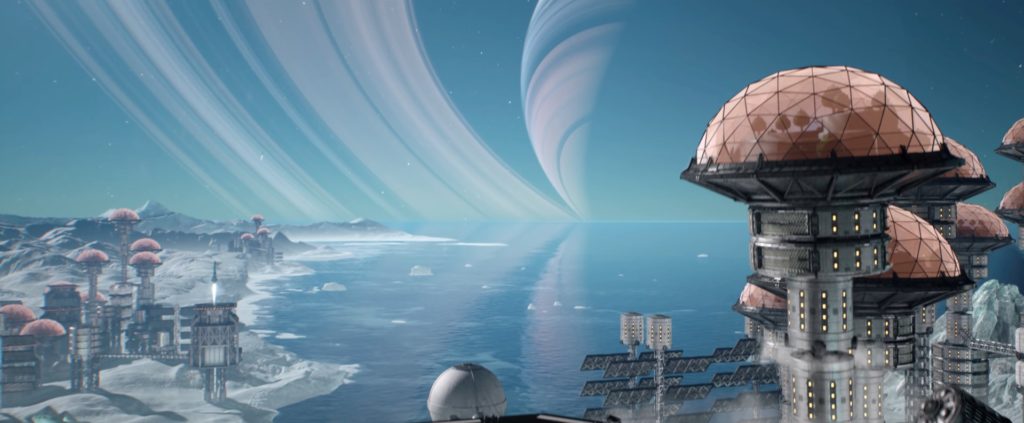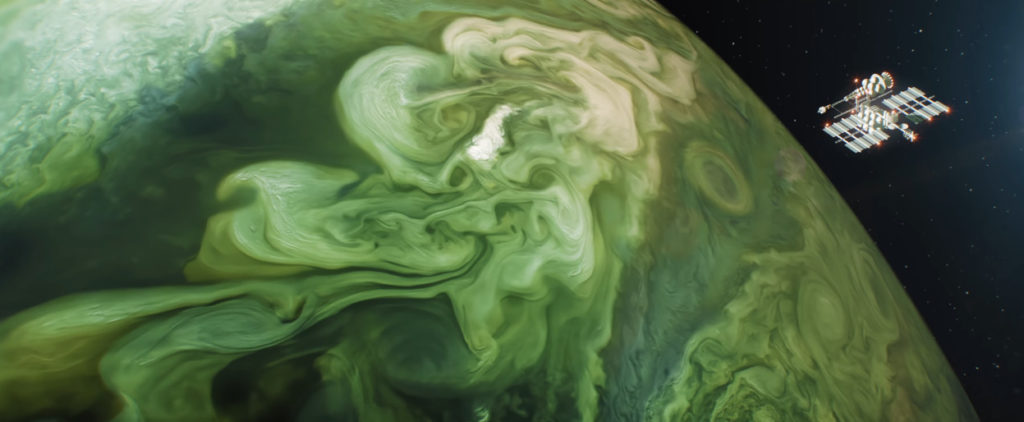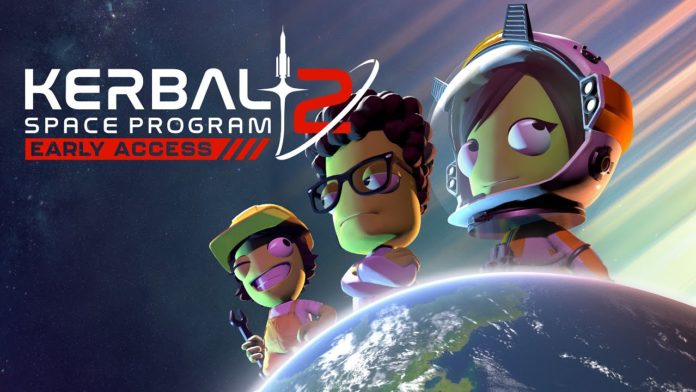Over 3 years since the initial announcement of Kerbal Space Program 2 (KSP 2), the release of the long-awaited sequel to 2011’s premier space-flight simulator is finally on the horizon. The original game is widely beloved for its zany wish fulfillment of a fantasy many of us share – building rockets and blasting off to explore space. Now, the sequel is taking everything great about the first game and dialing it up a notch. KSP 1 was an indie cult sensation that is still adored today for its engaging gameplay and timeless charm but is starting to show its age over a decade after its initial release. KSP 2 seeks to polish off those rough edges while greatly expanding the scope of what is possible in this space-flight sandbox. Read on to find out everything you need to know about the upcoming space-flight/flight disaster simulator:
KSP 2 New Technologies: Interstellar Travel, Colonies, and More

The most notable change in Kerbal Space Program 2 is the shift in focus from the “technologies of today” to the “technologies of the future”. While the technologies and engineering aptitude of the KSC (Kerbal Space Center) in the original game were largely limited to our real-world capabilities, KSP 2 will be shooting for the stars. While still grounded in real-world concepts and science, the sequel will shed the shackles of reality and introduce technologies including Interstellar travel, planetary colonization, new engines, fuels, and more.
In KSP 2, you will start out similar to the first game – on the planet Kerbin, with the initial aim of exploring the Kerbol System. However, as you progress you will unlock a variety of new engines and vehicles that will enable travel between the stars. The developers have teased the concept of massive “motherships”, which can be used to conduct interstellar travel and explore new star systems across the galaxy. New engine technologies such as nuclear pulse propulsion (inspired by NASA’s Project Orion experiments conducted in the 1950s and 60s) will facilitate much faster travel within star systems as well. The game will also feature an all-new speculative fuel type known as Metallic Hydrogen, boasting 2x the power of any known propellant known to man today.
Another headlining feature of KSP 2 is the ability to build entire colonies on habitable planets, as well as construct fully functional orbital colonies in space where the player can design ships unrestricted by the encumbrance of gravity. Eventually, you will be even able to build interplanetary trade networks across entire star systems.
KSP 2: Graphics and Visual Presentation
While the gameplay of the original Kerbal Space Program still retains its timeless quality, the graphical presentation has not aged particularly well. Kerbal Space Program 2 will see the franchise get a much-needed visual overhaul with significantly better-looking planets, environments, ships, and vehicles (you can even color individual parts of your ship for the first time ever). The sequel uses a new planetary generation system that provides much more detail and fidelity to the planets within the Kerbol system and beyond. Planets will also feature more variety and enhanced surface details to facilitate exploration and discovery for the player.
Like the rest of the game, the titular Kerbals are also getting a glow-up in KSP 2. The charming green humanoids will be getting a makeover complete with all new models, enhanced textures, and higher resolutions. The new models and animations will allow the Kerbals to respond more realistically to the physical forces of space flight. More importantly, the Kerbals in KSP 2 will also feature a wider variety of hairdos, animations, and emotional expressions. Coupled with the all-new explosion physics, players will be able to watch their Kerbals express terror in a variety of ways as their ships crash and burn in glorious high definition.
KSP 2: User Interface and All New Tutorials
Despite getting plenty of plaudits for its unique concept, engaging gameplay, and charming presentation, it fell short in terms of accessibility, particularly for new players. As expected, there is a bit of a learning curve associated with orbital physics and aerodynamics, but the text and button-heavy, grey-tinged user interface only exacerbated the issue. KSP 2 is completely overhauling its UI (User Interface) with a deeper focus on approachability this time around. Players will be able to simultaneously work on multiple sub-assemblies inside the VAB (Vehicular Assembly Building). Wing alignment on your ships will be much easier this time around with the introduction of procedural wings, which can be fully customized as required. All new overlays will also show the effects of any changes made in real time. Kerbal Space Program 2 will also feature several other UI improvements including a completely new map view with fancy new iconography, a redesigned nav-ball cluster, as well as the ability to Time Warp after initiating a burn so you don’t have to sit there staring at your screen waiting for it to conclude.
Along with improvements to the user interface, KSP 2 will feature all-new animated tutorials to better explain the game’s systems and core scientific concepts to novice players. The tutorials will be organically integrated with the gameplay, and players will have the freedom to opt out of watching them should they wish to.
KSP 2: New Planets and Celestial Bodies

Kerbal Space Program 2 will feature many new planets, moons, star systems, and various other space oddities to explore. While every celestial body from the original game will also make a comeback in KSP 2, some of the new ones include:
- Jool – A massive green gas giant with numerous moons including Laythe, Pol, Bop, Vall, and Tylo.
- Gurdamma – A young terrestrial planet that represents a “young” Earth as it was nearly 4 billion years ago. The planet also features a residual planetary ring as well as an atmosphere devoid of Oxygen.
- Donk – Gurdamma’s moon.
- Rask and Rusk – A two-body system that will offer a unique challenge to players who will have to contend with two interacting gravitational points.
- Glumo – A Saturn-like gas giant with double rings.
- Ovin – A bigger version of Earth with high gravity and a planetary ring.
- Char – A heat-blasted world made of iron and lacking an atmosphere.
- Puf – An ocean planet whose appearance resembles an eyeball.
- Deb Deb – An all-new star system for players to explore.
Will KSP 2 Feature Multiplayer?
The developers have confirmed that multiplayer will be a big feature in Kerbal Space Program 2 moving forward. However, the hugely anticipated feature won’t arrive until nearly the end of the Early Access period, so you might have to wait a bit more if you were planning to launch into space with friends. When it finally does arrive, multiplayer mode will give players the ability to establish cooperative space agencies and work together, or create rival entities to compete for space supremacy.
Will KSP 2 Support Modding?
One of the major reasons for the longevity of the original Kerbal Space Program was the game’s passionate modding community. Developer Intercept Games aim to foster a similar modding environment for KSP 2 and have even brought prominent KSP 1 modder Chris Adderly into the fold in order to facilitate easier and more efficient modding tools and standards.
KSP 2: Release Date and Where to Play
Kerbal Space Program 2 is set to release in Early Access for PC on February 24, 2023 via Steam and Epic Games Store. Much like the original game, KSP 2 will launch with core features and new updates will be rolled out in line with the Early Access developmental roadmap. According to the developer, many of the hotly anticipated new systems such as colonies, interstellar travel, planetary exploration, and Multiplayer will be gradually added to the game after the Early Access release. However, you will still be able to do everything you could in the previous game and more at launch, all while enjoying the benefits of the vastly improved user interface, technical presentation, and new player onboarding.
KSP 2 does not have a firm console release date yet, but the developers have confirmed that the game will also come out on PlayStation 5 and Xbox Series X/Series S after the Early Access period has concluded.
KSP 2 Developers: Who is Making the Sequel?
Kerbal Space Program 2 is being developed by Seattle-based studio Intercept Games. The game was originally announced at Gamescom 2019 in development by Star Theory Games but after the first major delay development was handed to the newly formed Intercept Game under publisher Private Division, industry behemoth Take-Two Interactive’s indie publishing label.
Intercept Games employs many former Star Theory developers (including the Creative Director and Lead Producer), and is working with Mexican developer Squad (developer of the original Kerbal Space Program) to ensure KSP 2 remains true to its heritage.
KSP 2: Trailer
You can check out the Kerbal Space Program 2 Announce Trailer below:


